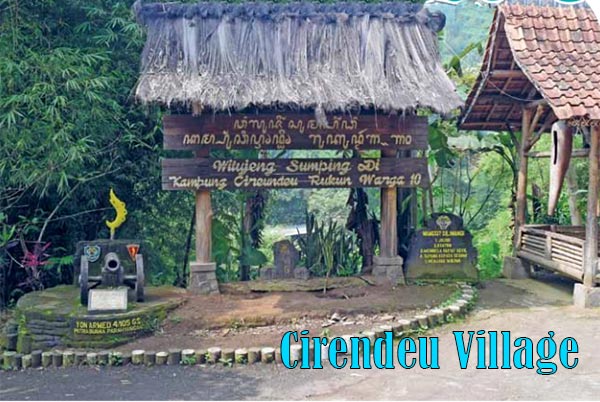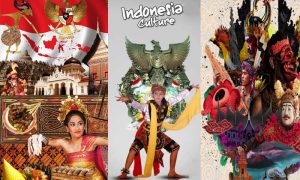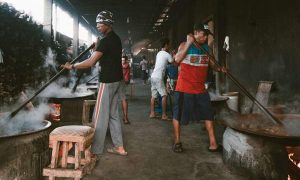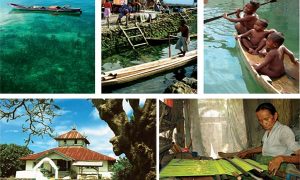
The author has tried to provide one of the villages scattered in West Java Indonesia, namely Cirendeu Village.
Probably, many of us have not heard about this place. This village is one of the indigenous villages that have survived more than four centuries by consistently upholding sublime Village cultural values.
The writer’s journey to the village was smooth. The people around the village were quite friendly and cooperative. They directed the author to meet the Head of Neighborhood to hold a question and answer about Cirendeu village.
Gusti nu ngasih, Alam nu ngasah, Manusa nu ngasuh is a slogan that is firmly held by villagers who uphold the importance between synergy and nature. Cirendeu Village itself is located in Leuwigajah Village, District of South Cimahi, West Java. The readers who often travel to Bandung may be familiar with Baros Toll Road.
Cirendeu Village
Cirendeu Village can be reached in about 30 minutes from the exit toll of Baros. The villagers consume cassava as the daily staple food, different with most of Indonesian who consume rice. This is coming from a bleak history of Dutch Colonialism. In the Dutch colonial era, all the staples, which had a high value, must always be submitted to the colonial government as a tribute.
In Sundanese term “Belanda mah ngajajah beuteung, lamun hayang dahar ngeunah kudu jadi Baladna” which means the Dutch colonized nation to make the Indonesian people starving and people who want a good meal should be a spy for the Dutch.
The elders of this village began to think about various alternatives to alleviate his village to be independent in food. A wide variety of staple food alternatives had been tried from tubers until the beans before finally chose cassava as an alternative. Cassava is chosen as a preventive solution of crop failure and also it can be planted in any season and can be harvested throughout the year.
The villagers chose the cassava with high cyanide content. It was a measure to prevent the Dutch to seize cassava as a tribute. Way of making bitter cassava to be ready to consume had several phase-stages that were originally kept as secret that passed down through the generations. It used traditional tools such as fabric and tanggog (woven bamboo).
After the independence, it is no longer a secret. One of the traditional leaders, Mrs. Omah Asmanah received a certificate of appreciation from the Cimahi Government in food matter for patenting the process of making cassava in Cirendeu village into a decent meal.
Besides being used as a staple food, cassava is also used as an ingredient in a variety of cakes and snacks. This is because many requests of Cirendeu Village visitors who often ask for a souvenir to take home. Cassava flour as the substitution of wheat flour turned out to have a taste that is not less tasty. Cirendeu has become the baking center since 2008 and it helps the people’s economy positively
From the writer’s observation, many of the people around the village Cirendeu also consumed cassava as a staple food. Generally, we can see the housewives process the cassava in the courtyard of houses.
Cirendeu village community has its own protected forest called Hutan Larangan (forbidden forests) and Hutan Tutupan (restricted forest). Hutan Larangan is not open for public, only the indigenous people are allowed in order to maintain the condition of the water source to prevent damage, while Hutan Tutupan is possible to visit but must be accompanied by the indigenous people.
It turned out that Hutan Tutupan has an interesting spot to capture the view of Bandung. There is some area in Hutan Tutupan, namely Hutan Baladahan where the visitors must take off the footwear. The author’s favorite spot to take pictures is the Batu Cadas Gantung (Hanging Rock) or Gajah Langu. This place can be reached within approximately one hour walk from the Cirendeu Village.
On the middle of the way to the spot, visitors will be spoiled with the landscape of cassava planting and the beautiful natural scenery. Arriving at the Batu Cadas Gantung, visitors can enjoy almost 1800 views of the city of Bandung and its surroundings.
When Naga Village in Tasikmalaya still maintains traditional houses from generation to generation, people in Cirendeu Village accept the development progress therefore people’s homes are built contemporary. People in Naga Village have left the cult and have affiliated with the legitimate religion in Indonesia, while people in Cirendeu still adhere to the teachings of the ancestors or the teachings of tradition to this day although it is still not recognized by the government.
Indigenous beliefs have become the cause of many problems for villagers, such as difficulty in education access, difficulty in creating account at a private bank, and difficulty in obtaining deeds. A wide variety of researchers who have visited this village give their classification of each of the beliefs namely Cirendeu Madraisme, teaching of Jawa Sunda, Sunda Karuhun or Sunda Wiwitan
Traditional Ceremonies in Cirendeu Village
Like most other indigenous villages, people in Cirendeu often hold traditional ceremonies at weddings, births, deaths, and annual ritual called Syura-an or Saka Sunda New Year which this year falls in October. Syura-an ceremony is celebrated as the indigenous peoples’ gratitude for the grace of the Almighty and is usually celebrated on a large scale.
Over the years various government agencies, representatives of other indigenous villages, communities, groups and circles regularly participate and contribute in this event. Sura-an held in a full day, starting from the morning ritual by doing “ngajayak” (walk around the village) from the gate of the village and ends up at the village hall. Arriving at the village hall, the group was greeted by musical instrument, angklung. After all, a village elder delivered his remarks continued by Ngurah Tumpeng made from cassava.
In the evening, the group returned to perform the ritual around the village carrying the torch. After that, the art performances were held such as Kidung Bumi Segandu, Jaipongan, martial arts, karinding, calung, marawis, and usually ended with a puppet show. According to the last census conducted by the government, Cirendeu villagers were 70 households, all of them gave their contribution in their own way for the sake of the success of this event.
Cirendeu villagers hope that the government creates a separate law that essentially accommodates them to enjoy their rights as citizens as they face the faith/religion constraint. It is not exaggerating when Cirendeu village becomes interesting place to visit for history and culture lovers.
Cirendeu villagers – Temporaktif Culture






